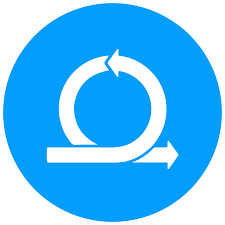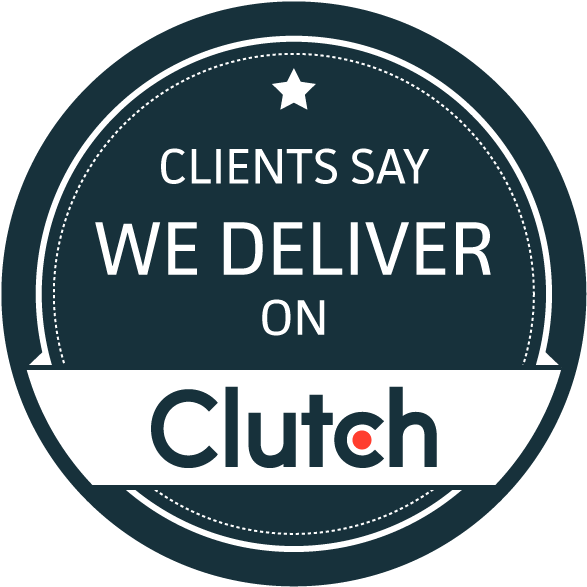Cloud Migration in Health Sector
In the realm of healthcare, cloud computing serves as a cost-effective solution for care providers by reducing IT and infrastructure expenses. It bolsters data security and ensures compliance, while offering effortless access to cutting-edge technologies like big data analytics, artificial intelligence (AI), and the Internet of Things (IoT).
The healthcare cloud computing industry, worth $54.50 billion, forecasts a compound annual growth rate (CAGR) of 16.80%. The market is projected to reach an impressive $257.53 billion.
Approximately 70% of healthcare organizations have implemented cloud solutions, primarily leveraging cloud infrastructure. Yet, these businesses have yet to fully harness the capabilities of cloud technology, beyond mere application hosting.
The key drivers of the growing cloud adoption in the healthcare industry are:
- Cloud computing in healthcare offers cost-effectiveness, improved data storage capacity, flexibility, and scalability benefits.
- Healthcare industry leverages EHR, e-prescribing, telehealth, mHealth, and cloud solutions for enhanced service delivery.
- Emerging tech trends like big data analytics, AI, IoT, and cloud-based solutions are transforming industries.
In healthcare cloud computing, primary apprehension lies in data security due to the increased risks associated with third-party handling of Protected Health Information (PHI). These include potential data breaches and non-compliance issues.
Healthcare Applications Enabled by Cloud Technology
HIPAA-compliant cloud platforms—such as Microsoft Azure, Microsoft Cloud for Healthcare, AWS, and Google Cloud—offer secure infrastructure and Platform-as-a-Service (PaaS) solutions for developing healthcare applications of any complexity.
These PaaS offerings provide a cost-effective foundation for integrating advanced technologies into healthcare apps, including:
Success Stories
Explore how we've helped clients build impactful mobile apps tailored to their industry needs and business goals. Use the filters to browse our case studies by industry or region to find the most relevant projects.
Organized Product Ecosystem for a Building Mixtures Manufacturer & Concrete Supplier — PIM & DAM–Driven Acceleration
A regional manufacturer of dry building mixtures and ready-mix concrete, supplying materials to construction companies, hardware chains, and dealers. The product line includes adhesives, sealants, plasters, leveling compounds, additives, and more. The company operates multiple plants, warehouse hubs, and a network of certified dealers across several countries.
Read moreOn-Demand Service Marketplace for Location-Based Provider Matching
A European startup launching a location-based platform for connecting individuals with local professionals — from handymen and electricians to cleaners and personal trainers. The goal was to allow customers to quickly find nearby service providers, compare availability, and book appointments directly through a map-based interface.
Read moreStone Countertop Online Configurator & Order Management System for End-Users & Resellers
A regional stone fabrication and installation company working with both individual homeowners and a network of B2B resellers. Their goal was to simplify the quoting and ordering process for custom countertops while reducing manual work on both sides.
Read moreAI Technology Explained
Cloud-based ML solutions empower the creation and optimization of ML models for predictive analytics, image recognition, speech understanding, and various other functionalities.
Cloud services utilized for constructing AI-driven health solutions encompass Amazon SageMaker, Amazon Bedrock, Amazon Transcribe, AWS HealthScribe, Amazon Polly, Microsoft's Azure Machine Learning, and Azure Bot Services. These platforms aid in the development of advanced healthcare solutions bolstered by artificial intelligence.
Diagnostics
Cloud-integrated AI engines within diagnostic software collect data from various sources such as connected medical equipment, Electronic Health Records (EHR), patient applications, and medical personnel apps. Analyzing this information, the AI engine generates outputs tailored for either the patient's app or the healthcare provider's interface. These outputs may suggest treatment plans, lifestyle modifications for patients, potential diagnoses for medical staff, or alerts to both patient and physician when connected devices detect irregularities.
Personalized Treatment Approach
AI-integrated applications offer tailored treatment proposals, considering each patient's distinct medical background. For instance, advanced cancer care planning software uses intricate analysis of variables including tumor specifics, genetic indicators, past health records, treatment efficacy data, among others, to predict optimal treatment strategies and medications.
Efficient Medical Record Organization
AI-integrated healthcare document management systems streamline clinical documentation for medical professionals, alleviating the administrative load. Equipped with speech recognition, these tools facilitate dictation and voice commands. Moreover, AI-driven auto-suggestions expedite data entry, extract valuable insights from unstructured text, offer text-to-speech functionality, and provide numerous other features designed to optimize documentation efficiency.
Telemedicine
Telemedicine leverages video streaming and conferencing to foster online interaction between patients, caregivers, and medical professionals. These tools enhance communication efficiency across the healthcare sector.
Within a telemedicine application, a unified cloud system integrates video streaming services and data processing & storage modules. This system seamlessly links with healthcare provider systems such as Electronic Health Records (EHR) and Laboratory Information Systems (LIS), smart-enabled devices, and user interfaces for both patients and medical staff, fostering efficient remote healthcare delivery.
Examples of cloud services that may be used to build telehealth solutions include:
- AWS & Azure Media Services: Leading Video Streaming Solutions.
- Messaging and conferencing solutions: Amazon Chime SDK, Amazon Pinpoint, Azure Communication Services.
Primary Care: Enhanced via Telehealth
Telemedicine applications in primary healthcare facilitate digital video/audio consultations, ensuring secure and HIPAA-compliant data exchange between physicians and patients. These platforms enable prescription issuance and additional healthcare services remotely.
Telehealth in acute care
Telehealth applications in emergency care facilitate virtual consultations between on-location emergency teams and off-site acute care specialists through videoconferencing and instant messaging platforms. The application utilized by the on-site team is purposefully designed, connecting seamlessly to the remote acute care center via a cloud-hosted video streaming server.
Telenursing
Telehealth apps enable nurses to assist patients in surgical preparation, oversee post-surgery recuperation, and offer guidance for alleviating symptoms. These digital tools are additionally beneficial for tracking treatment plan adherence and monitoring prenatal and neonatal care. Telenursing facilitates remote patient care and support.
Telehealth simplifies physical therapy access.
The mobile application serves as an effective tool for physical therapists, enabling them to assist patients in managing chronic conditions and post-operative recovery remotely. Particularly beneficial for immobile patients and those residing in remote or rural locations, this technology bridge gaps in accessibility to healthcare services.
IoMT
In an IoMT (Internet of Medical Things) infrastructure, smart devices, RFID tags, and patient wearables interconnect with a cloud server via gateways. This server houses data storage, processing, and analytical components, as well as business logic and control applications. User and admin applications facilitate data access for patients and healthcare professionals, while allowing command issuance to control apps.
The examples of cloud services that may be used to build IoMT solutions include:
- Big Data storage HIPAA-compliant options: AWS S3, Azure Storage
- Data warehousing solution compliant with HIPAA regulations: Amazon Redshift and Azure Synapse Analytics
- Connect and monitor IoMT devices with Azure IoT Hub and AWS IoT Core
- High Demand for IoMT Innovations
- Remotely tracks patient health data
Advanced wearable technology and smart devices continuously monitor and record vital signs such as body temperature, blood pressure, and glucose levels in patients. This data is transmitted to a remote cloud server for storage and analysis. If the system detects any irregularities, it instantly alerts both the patient and their healthcare provider. The system may also autonomously administer treatments (e.g., insulin injection via an insulin pump) or initiate predefined responses based on these findings
- Hospital asset tracking
An advanced hospital asset-tracking system employs Radio Frequency Identification (RFID) technology, labeling various hospital resources such as medical equipment for location monitoring, efficient usage, and anti-theft measures. Upon movement, RFID readers stationed in hospital rooms or corridors automatically read the tags, relaying asset location data to a cloud server. This sophisticated tracking system visually represents movable assets on an interactive hospital map, or swiftly provides nearby items upon user search requests, thereby enhancing resource management and operational efficiency within healthcare facilities
- Streamlined Workforce Monitoring System
Real-time location tracking for both patients and healthcare staff is enabled through secure RFID tag transmission from their bracelets to a cloud server. Advanced analytics within the cloud platform allow for evaluating and forecasting patient traffic and hospital admission rates
Why Sfinitor?

Google Partner since 2010.

A quality-first approach based on a mature ISO 9001 quality management system.

Agile approach to achieve efficient results in projects with vague scope.

Recognized for reliability, trustworthiness, and excellence in delivering value.

Expertise in engineering, cloud migration, AWS environment.

Expertise in delivering strategic solutions across the Microsoft Cloud.
- Veteran in crafting cloud solutions.
- Veteran in crafting healthcare software solutions.
- Certified under ISO 13485, ISO 9001, and ISO 27001 quality standards.
- Expertise encompasses interoperability and data exchange protocols, including FHIR, HL7, CDA, CCD, XDS/XDS-I. Proficient in terminology and coding systems like ICD-10, CPT, LOINC, and medical imaging standards such as DICOM.
- Extensive knowledge encompasses HIPAA, GDPR, NCPDP, FDA, ONC, and MDR regulations.
- Partnering with Microsoft & AWS officially.
